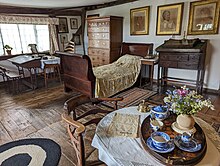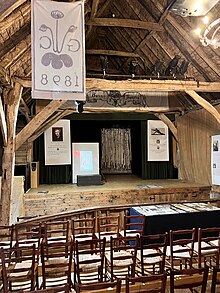
Dame Joanna Lamond Lumley is a British actress, presenter, former model, author, television producer and activist. She has won two BAFTA TV Awards for her role as Patsy Stone in the BBC sitcom Absolutely Fabulous (1992–2012) and was nominated for the 2011 Tony Award for Best Featured Actress in a Play for the Broadway revival of La Bête. In 2013, she received the Special Recognition Award at the National Television Awards and in 2017 she was honoured with the BAFTA Fellowship award.

Dame Alice Ellen Terry was a leading English actress of the late 19th and early 20th centuries.

Sir Henry Irving, christened John Henry Brodribb, sometimes known as J. H. Irving, was an English stage actor in the Victorian era, known as an actor-manager because he took complete responsibility for season after season at the West End's Lyceum Theatre, establishing himself and his company as representative of English classical theatre. In 1895 he became the first actor to be awarded a knighthood, indicating full acceptance into the higher circles of British society.

The Lyceum Theatre is a West End theatre located in the City of Westminster, on Wellington Street, just off the Strand in central London. It has a seating capacity of 2,100. The origins of the theatre date to 1765. Managed by Samuel Arnold, from 1794 to 1809 the building hosted a variety of entertainments including a circus produced by Philip Astley, a chapel, and the first London exhibition of waxworks by Madame Tussauds. From 1816 to 1830, it served as The English Opera House. After a fire, the house was rebuilt and reopened on 14 July 1834 to a design by Samuel Beazley. The building is unique in that it has a balcony overhanging the dress circle. It was built by the partnership of Peto & Grissell. The theatre then played opera, adaptations of Charles Dickens novels and James Planché's "fairy extravaganzas", among other works.

Fred Terry was an English actor and theatrical manager. After establishing his reputation in London and in the provinces for a decade, he joined the company of Sir Herbert Beerbohm Tree where he remained for four years, meeting his future wife, Julia Neilson. With Neilson, he played in London and on tour for 27 further years, becoming famous in sword and cape roles, such as the title role in The Scarlet Pimpernel.

Violet Augusta Mary Bourchier, née Barnes, known professionally as Violet Vanbrugh, was an English actress with a career that spanned more than fifty years.

Small Hythe is a hamlet near Tenterden in Kent, England. The population is included in Tenterden.
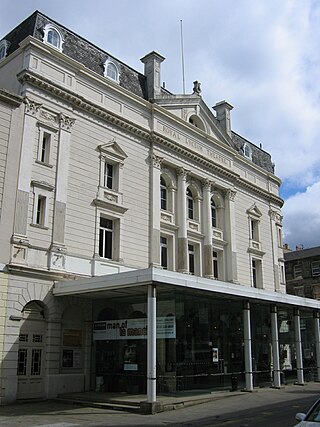
The Royal Lyceum Theatre is a 658-seat theatre in the city of Edinburgh, Scotland, named after the Theatre Royal Lyceum and English Opera House, the residence at the time of legendary Shakespearean actor Henry Irving. It was built in 1883 by architect C. J. Phipps at a cost of £17,000 on behalf of James B. Howard and Fred. W. P. Wyndham, two theatrical managers and performers whose partnership became the renowned Howard & Wyndham Ltd created in 1895 by Michael Simons of Glasgow.
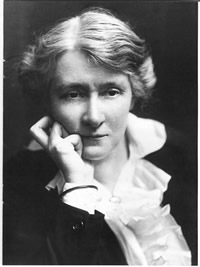
Edith Ailsa Geraldine Craig, known as Edy Craig, was a prolific theatre director, producer, costume designer and early pioneer of the women's suffrage movement in England. She was the daughter of actress Ellen Terry and the progressive English architect-designer Edward William Godwin, and the sister of theatre practitioner Edward Gordon Craig.
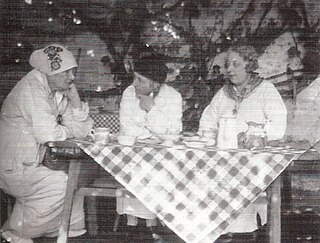
Christabel Gertrude Marshall was a British campaigner for women's suffrage, a playwright and author. Marshall lived in a ménage à trois with the artist Clare Atwood and the actress, theatre director, producer and costume designer Edith Craig from 1916 until Craig's death in 1947.

Clare "Tony" Atwood was a British painter of portraits, still life, landscapes, interiors and decorative flower subjects. Atwood lived in a ménage à trois with the dramatist Christabel Marshall and the actress, theatre director, producer and costume designer Edith Craig from 1916 until Craig's death in 1947.

The Purcell Operatic Society was a short-lived but influential London opera company devoted to the production of stage works by Henry Purcell and his contemporaries. It was founded in 1899 by the composer Martin Shaw and folded in 1902. Its stage director and production designer was Gordon Craig whose productions for the company marked the beginning of his career as a theatre practitioner. Their debut production of Purcell's opera Dido and Aeneas in 1900 was one of the earliest staged performances of the work in modern times.
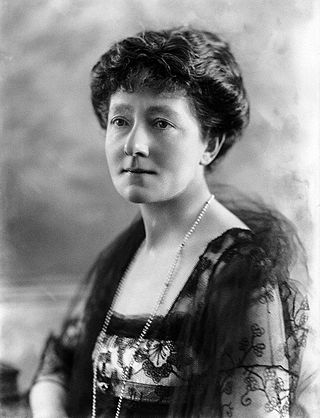
Mabel Gwynedd Terry-Lewis was an English actress and a member of the Terry-Gielgud dynasty of actors of the 19th and 20th centuries.
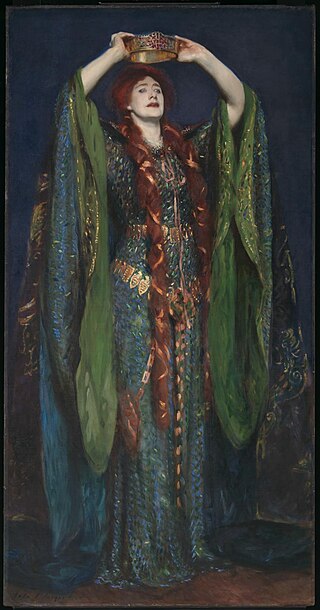
Ellen Terry as Lady Macbeth is an oil painting by John Singer Sargent, now in Tate Britain, in London. Painted in 1889, it depicts actress Ellen Terry in a famous performance as Lady Macbeth in William Shakespeare's tragedy Macbeth, wearing a green dress decorated with iridescent beetle wings. The play was produced by Henry Irving at the Lyceum Theatre, London, with Irving also playing Macbeth opposite Terry. Sargent attended the opening night on 29 December 1888 and was inspired to paint Terry's portrait almost immediately.
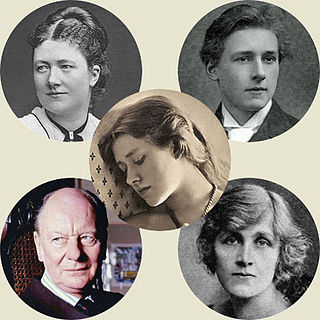
The Terry family was a British theatrical dynasty of the late 19th century and beyond. The family includes not only those members with the surname Terry, but also Neilsons, Craigs and Gielguds, to whom the Terrys were linked by marriage or blood ties.
Ada Nettleship was a British dressmaker and costume designer known for working at the forefront of the Aesthetic dress style and the rational dress movement.

Alice Vansittart Comyns Carr, was a British costume designer whose work is associated with the Aesthetic dress movement.
Patience Glossop Harris, was a British costume designer for the theatre best known for her work with the actor Ellen Terry early in her career.
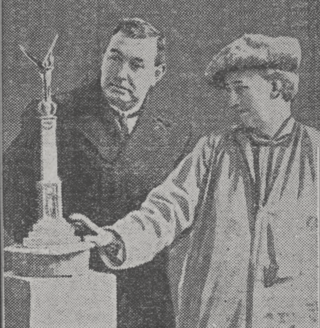
Margaret Winser was an English sculptor, medallist, artist, and art teacher.
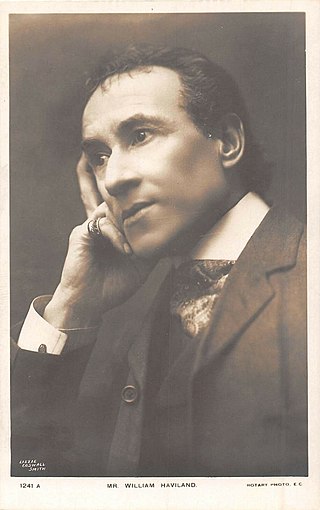
William Haviland was a British actor-manager specialising in the works of Shakespeare who during his long stage career performed with some of the leading actors of his time including Henry Irving and Herbert Beerbohm Tree.


